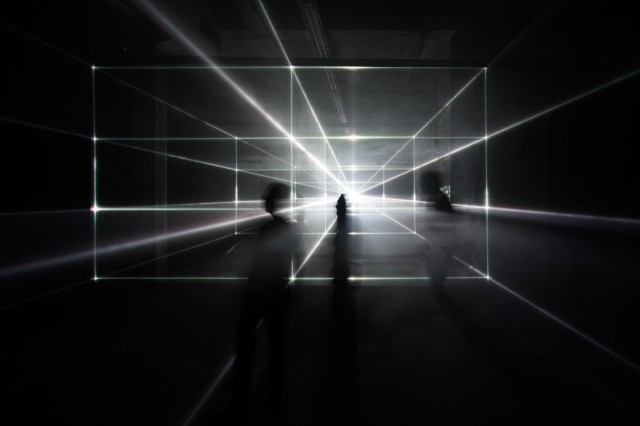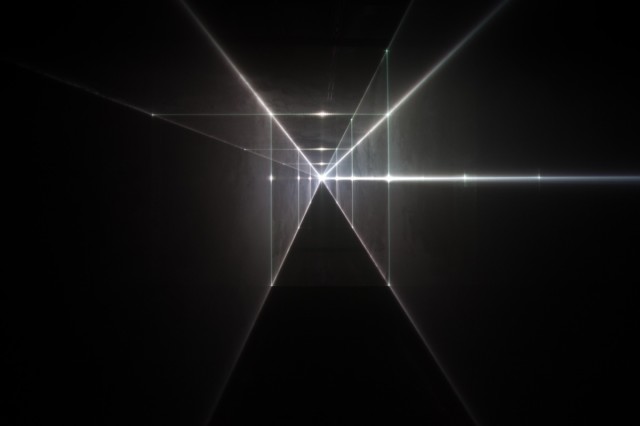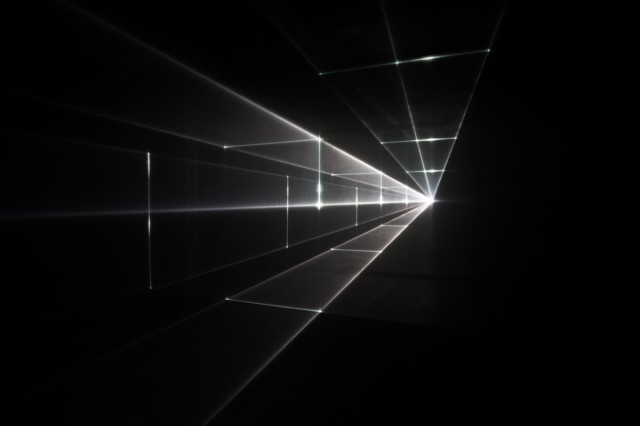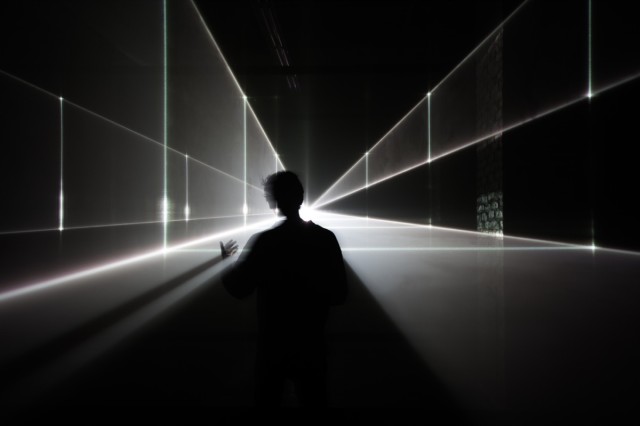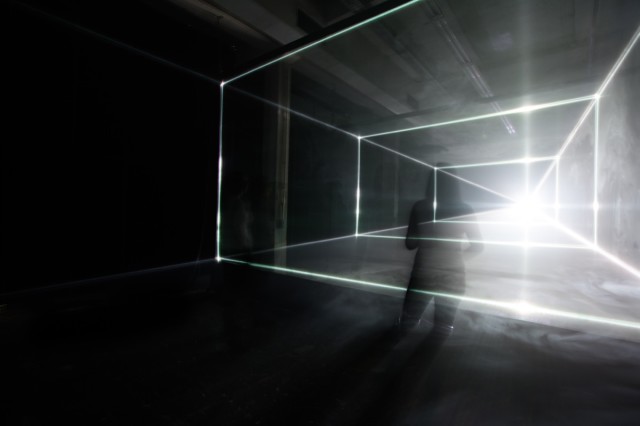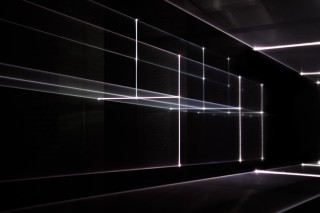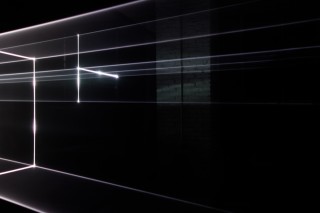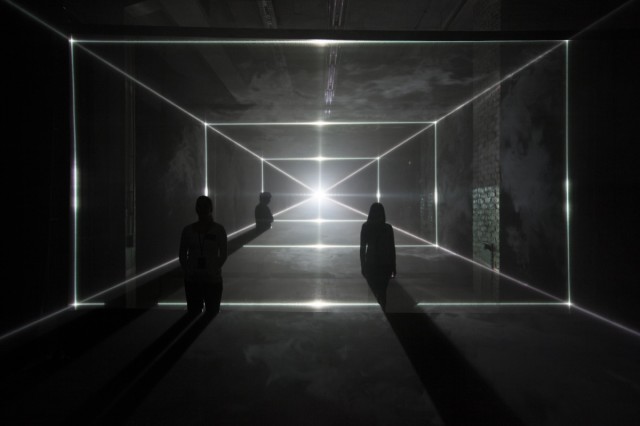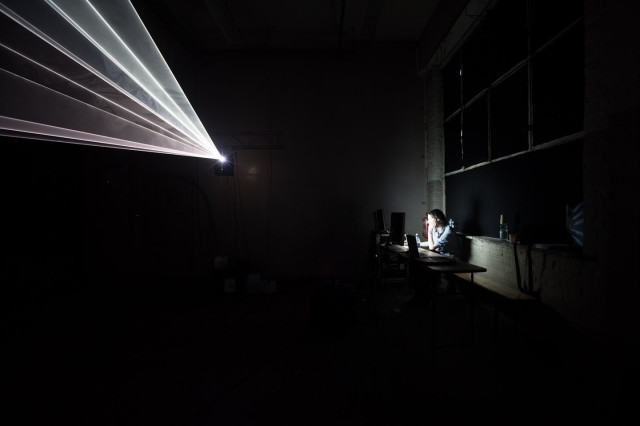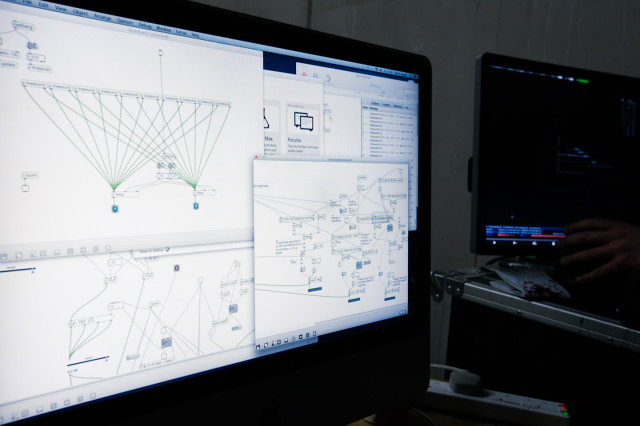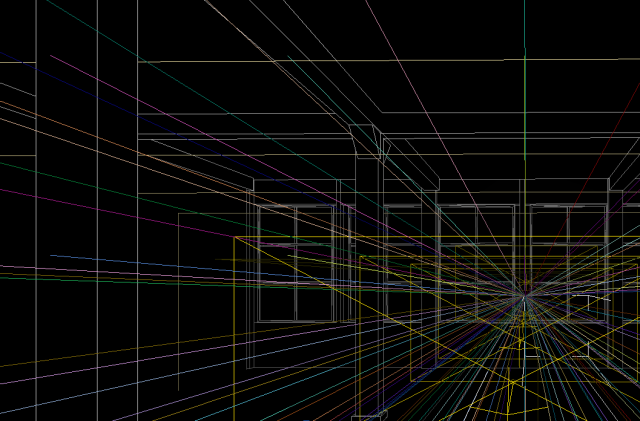هنرهای دیجیتال روزبهروز در حال توسعه هستند چرا که هنرمندها در برخورد با جریان دیجیتال به دلیل ظرفیتها و امکانات فوقالعاده اون خیلی زود دلباخته جریان دیجیتال میشن. کمتر هنرمندی این روزها به اصالت فنون قدیم فکر میکنه و کمتر هنرمندی هم هست که به نوعی درگیر امکانات و ظرفیتهای رایانهای نشده باشه.
بسیاری از فنون دیجیتال معطوف به ایجاد نوعی وهم مجازی در جهان حقیقی هستند. به طور مثال ایجاد گریزی از اشعههای نورانی که نسبت به مکان ناظر تغییر جهت و راستا خواهد داد و به این ترتیب در فضای تاریک اتاق مخاطب احساس حضور در بیکرانی میکنه که تنها به واسطهی شاخصههایی از نور در قالب یک پرسپکتیو انتزاعی تعریف میشه.
Created by UVA, Vanishing Point employs perspective as both tool and visual outcome to reshape, redefine and represent a pristine space. Inspired by sketches of Great Masters like Leon Battista Alberti, Leonardo DaVinci or Albrecht Dürer, UVA sends lines into space from an arbitrary vanishing point, creating different volumes, divisions and rooms to be explored by the audience.
The project is the result of research UVA did in the studio with atmospherics, lights and of course.. lasers. The team has always been interested in physical presence of light, and through projects such as Speed Of Light, Y-3 and Originthey’ve been exploring different ways of creating a structure out of light. In some projects they used existing architecture, in others built their own. Vanishing Point uses the idea of ‘light architecture’ to the concept of perspective; drawing real perspective lines in a space. ‘White’ laser, a red, green and blue diode combined are used, driven by d3(UVA’s custom software and hardware bundle) through a Pangolin interface. A custom Pangolin extension for d3 was coded in order to facilitate this, and they programmed a custom module takes care of the drawing.
It was interesting how the different lasers we experimented with required different drawing techniques. Depending on the quality of the laser, the effort required to trick it into drawing evenly lit, straight planes can be quite considerable. Though at the same time, part of the fun is to play with the medium, and adjust the animation of the programming to work with it—not against it. Safety is the other major concern. In a way, as part of the medium, danger is definitely part of what is exciting about lasers. But burning retinas (either those of human spectators, or those of their cameras) wasn’t part of the brief, so you have to put a few smart systems in place.
Like in other UVA installation, sound always plays a big part. In this particular case, the sound is sampled directly and in real time from the laser using a contact microphone. A MaxMSP patch running on a separate machine takes input from this microphone and from d3 over OSC. The sound you hear is directly generated by the mechanics of the laser drawing what you see.
The installation is currently on show at the Olympus Photography playground in Berlin until end of May.
For more about UVA, read our special feature from few weeks back: Creating spectacles with d3 / United Visual Artists
[ طرح انتخاب شده از : CreativeApplications ]






















